Monday, February 28, 2011
Rosella Denicolò
(Article courtesy of the School In Flow from the site www.craniosacralebiodinamica.it) 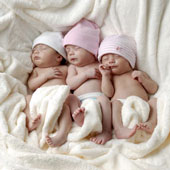 Baby Body Language is the way they talk to babies tell the story of their birth. If we learn to listen to this language of gestures, tears, cries, we can accept what is left over and start again. With a new story to tell all. I seem to get into a story as I go along this road along high walls of rock, which sometimes seems to end and instead continues and makes me lose track of the world. The Kushi Ling, a Buddhist meditation center. I just have time to drink green tea and start playing the gong. The seminar on Craniosacral Biodynamics birth is led by Remo Rostagno who runs the school in Flow. Remo Rostagno is also a dancer and an introduction to the birth through movement. "Complete" is a key word in all somatic approaches to trauma. Also according to the method Somatic Experiencing, in trauma, there is always an 'action was not possible to express and try to complete. "When the child comes into the studio through the body tells me the story of his birth," says Appleton. "Another example: during the birth mother had given a strong painkiller. I observe the child in the wheelchair. Moved by repeating the sequence of delivery and at one point had a sort of collapse in which relived the moment when the drug began to numb his thrusts. I placed a hand on her navel on the other foot. He started to push hard with your legs and feet. Here's how babies are made to throw him out of something that does not need. The change is evident: they become, the softer, more relaxed. " Emerson and William Franklyn Sills, two therapists who have studied the birth from the viewpoint of the unborn and its intrinsic resources, have described the process in four stages. In second stage, the child needs to turn his head to pass through the pelvis. Must orient themselves and find a balance. If this step is hampered by the recruitment of anesthetics or dall'epidurale, the person may find it difficult to navigate in the world, make decisions, to find a direction. Source:
Baby Body Language is the way they talk to babies tell the story of their birth. If we learn to listen to this language of gestures, tears, cries, we can accept what is left over and start again. With a new story to tell all. I seem to get into a story as I go along this road along high walls of rock, which sometimes seems to end and instead continues and makes me lose track of the world. The Kushi Ling, a Buddhist meditation center. I just have time to drink green tea and start playing the gong. The seminar on Craniosacral Biodynamics birth is led by Remo Rostagno who runs the school in Flow. Remo Rostagno is also a dancer and an introduction to the birth through movement. "Complete" is a key word in all somatic approaches to trauma. Also according to the method Somatic Experiencing, in trauma, there is always an 'action was not possible to express and try to complete. "When the child comes into the studio through the body tells me the story of his birth," says Appleton. "Another example: during the birth mother had given a strong painkiller. I observe the child in the wheelchair. Moved by repeating the sequence of delivery and at one point had a sort of collapse in which relived the moment when the drug began to numb his thrusts. I placed a hand on her navel on the other foot. He started to push hard with your legs and feet. Here's how babies are made to throw him out of something that does not need. The change is evident: they become, the softer, more relaxed. " Emerson and William Franklyn Sills, two therapists who have studied the birth from the viewpoint of the unborn and its intrinsic resources, have described the process in four stages. In second stage, the child needs to turn his head to pass through the pelvis. Must orient themselves and find a balance. If this step is hampered by the recruitment of anesthetics or dall'epidurale, the person may find it difficult to navigate in the world, make decisions, to find a direction. Source:
 Baby Body Language is the way they talk to babies tell the story of their birth. If we learn to listen to this language of gestures, tears, cries, we can accept what is left over and start again. With a new story to tell all. I seem to get into a story as I go along this road along high walls of rock, which sometimes seems to end and instead continues and makes me lose track of the world. The Kushi Ling, a Buddhist meditation center. I just have time to drink green tea and start playing the gong. The seminar on Craniosacral Biodynamics birth is led by Remo Rostagno who runs the school in Flow. Remo Rostagno is also a dancer and an introduction to the birth through movement.
Baby Body Language is the way they talk to babies tell the story of their birth. If we learn to listen to this language of gestures, tears, cries, we can accept what is left over and start again. With a new story to tell all. I seem to get into a story as I go along this road along high walls of rock, which sometimes seems to end and instead continues and makes me lose track of the world. The Kushi Ling, a Buddhist meditation center. I just have time to drink green tea and start playing the gong. The seminar on Craniosacral Biodynamics birth is led by Remo Rostagno who runs the school in Flow. Remo Rostagno is also a dancer and an introduction to the birth through movement. What movements does the baby to be born? What is your innate motor program?
In the room we are in the wind, mostly women. We take a soft ball. "Imagine that both the head and the cap, the nose of the child. The ball drops and the nose wheel while to us, goes into decline and then rebound and then turns again. " We repeat the sequence several times with his hands. Then we lie on the mat and repeat the whole body with the same rotation, flexion, extension. I like to think that the first form of motion is a spiral, the symbol of the living. A girl in the group report having felt a strange feeling: "It was as if my body already knew these movements," he says. "At the same time I was restless, and I got lost in the rotation. I did not know whether to go left or right. And even where it was the right or the left where it was. "Rostagno said that the Craniosacral Biodynamics is an approach of gentle bodywork that originated dall'osteopatia. The origin of this work is therefore based on the birth of the knowledge of anatomy and ability to touch on a very refined. Add to that a component of experience that allows access to the memories inscribed in our tissues. The things that the body knows and we know we can not, because they are preverbal. E 'precisely through these memories that we can work to solve problems and injuries that originate in our birth. What does this mean then that confusion was talking about the investor? To its birth?
Baby Body Language
The work on the origins of Craniosacral has developed mainly in the United States and the United Kingdom. Matthew Appleton is a psychotherapist and craniosacral operator of Bristol, has worked for 15 years with children and adults on this issue. "Birth is always an intense experience, with an unconscious emotional content that can accompany us throughout life," he says. "It 's an experience that can be painful, because the baby's head is bigger than an inch to the pelvis. To this the child must turn in childbirth. No other animal needs to do so. But the problem is not so much the pain itself but the fact that this pain is not always sufficient empathy. Emotions the child feels and knows that we are living a very difficult situation. Too many people, health professionals, doctors, however, are not aware of awareness of the child, keep memories of that experience, the unconscious mind but that is clearly set in his body. We see this in clinical work: when we create a space to listen these memories resurface. For this we learn the Baby Body Language, reading the movement of the child and to respond to his words motor. One day the parents came with a baby who continually shook his head. "He always says no, tell me worried. In reality is not saying "no". Is showing us how he tried to move his head to pass through the pelvis. I placed my hand on his temple and shortly after the child began to push her head. I was telling her story and took advantage of listening to complete what he needed to do. " The four stages of birth
Work on birth has an effect on the possible emotional consequences. "After fifty years of research we have identified some relationship between traumatic events related to birth and their projections in the relational life," says Graham Kennedy Craniosacral Therapy in London. first baby begins to descend through the pelvic cavity. "If you are overwhelmed by a too intense pressure, it could re-create that pressure," explains Kennedy. "It would affect the way in which, as an adult, is related to stress and pressure when there is no way out, or how to handle the changes." In
In the third stage the child navigate to the mouth of the uterus. Recurring themes: how to complete a project, how we present ourselves in the world and how we manage the effort.
In the fourth stage
the baby is welcomed. And 'the stage where it can take instrumental action, such as forceps and suction cups that have a strong impact on psychophysiology. In these cases the child could not complete the course and needed someone who would do it for him. But other problems arise from how they establishes the link with the mother. What psychoanalysts call the bonding and attachment style. Craniosacral
Cutting Of Churidar Pajami
Plagiocephaly
plagiocephaly is classified as an abnormality of the skull that goes under the name " : when the children always sleep on the same side;
brachycephaly
: when they sleep always face up, and
before the party Infant Jesus of Rome, leading a work based on the integration of diagnostics and treatment of disorders of postural aged 0-18 years, with osteopathic palpatory diagnosis and osteopathic manual techniques. According to a research
Source: Tuttosteopatia Papers
scafocefalia
: when they sleep with his head always to one side), the term plagiocephaly is the most widespread and is generally used to describe all three types of irregularities of the skull.
premature fusion of coronal suture early fusion of both coronal sutures
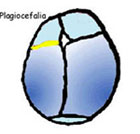 early fusion of the sagittal suture early fusion of the sagittal suture | 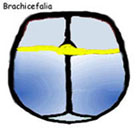 | 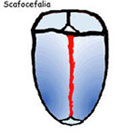 | Among the main causes, those pre -born and those which arise during childbirth.
premature compressive forces intrauterine
are the most common cause of cranial irregularities. Inside the womb the fetus could be restricted in movement, and be forced in the same position for a period of time. The position of the head and neck, long maintained, associated with the softening of the bones, cranial deformation tend to cause a headache and an imbalance of the neck muscles (particularly the sternocleidomastoid). After birth, the baby will tend to prefer the same position retained in the uterus, causing a bad experience cranial deformities. during childbirth
are the most common cause of cranial irregularities. Inside the womb the fetus could be restricted in movement, and be forced in the same position for a period of time. The position of the head and neck, long maintained, associated with the softening of the bones, cranial deformation tend to cause a headache and an imbalance of the neck muscles (particularly the sternocleidomastoid). After birth, the baby will tend to prefer the same position retained in the uterus, causing a bad experience cranial deformities. during childbirth
ectopic compressive forces
A traumatic birth, for example due to the use of forceps or suction cup. - VIEWS OSTEOPATHIC
- The osteopath has a very high percentage of complete success in cases of positional plagiocephaly. "The plagiocephaly - according to an article published
Manuela Emili
- is accessible through a structural component in the inaccessible neurological factors can be influenced and changed."
According to a study of 649 children examined with osteopathic approach - , osteopaths
- Nicette Sergueef along with Kenneth E. Nelson, Thomas Glon, determined that a thorough neonatal osteopathic examination can identify individuals predisposed to develop a posterior plagiocephaly.
own conduct in the department of pediatric surgery in the garrison Palidoro, cranial sacral osteopathic treatment may have in cases of plagiocephaly, an indication of choice, the aim was to show how the palpatory diagnosis osteopathic can integrate traditional semiotics. Research has shown that about 20 children (12 females and 8 males), 2 have reported frontal plagiocephaly, 4, a posterior plagiocephaly. At the end of osteopathic treatment plagiocephaly had improved in all cases treated and documented in two cases more stringent examination RX post-treatment.
Source: Tuttosteopatia Papers
Of Nicette Sergueef, Kenneth E. Nelson, Thomas Glonek Palpatory diagnosis of plagiocephaly
palpatory diagnosis of plagiocephaly Source: Elsevier, May 2006
palpatory diagnosis of plagiocephaly Source: Elsevier, May 2006
experience of osteopathic treatment for pediatric craniosacral dysfunction: case series
-
MISCELLANEOUS ITEMS on the internet only "helmets for plagiocephaly. Let's build an alternative
. Source: Tuttosteopatia.it III National Congress FIMP. "The land of empty cradles" - manipulative treatment on infants with birth trauma: results and follow up on 250 children
Osteopathy in children
- María José Núñez Prado
Plagiocephaly posicional y su abordaje osteopathic a Traves de Tecnicas Manuales - The positional plagiocephaly and its treatment by osteopathic manual techniques Source: Osteopathic School of Madrid, in December 2000. Published on www.osteopathic-research.com
-
Favourite Captain Morgan's
Otitis
DESCRIPTION MEDICAL Otitis media is one of the most relevant diseases in children. characterized by an ear infection in a small hollow bone (just behind the eardrum), otitis media affects for children, because of the shape and position of their eustachian tube, which does not allow good drainage of mucus from the middle ear to the other airways, so the pressure increases, causing pain. The liquid does not flow regularly promotes an ideal environment for the spread of viruses and bacteria, so infections that, if repeated, can damage the eardrum and inner ear structures.
In the Italian case, the treatment with 80 per cent of cases.
Bob Fulford, a leading professional in cranial osteopathy (since deceased), said that "the stagnation of middle ear fluid, resulting from decreased mobility craniosacral, is at the root of the problem. (... ) A gentle manipulation improves the craniosacral motion which, in turn, helps to drain the fluid from the middle ear. Osteopathic treatment considers the subject as a whole and therefore is not limited to local treatment of symptoms related to the area but search the normalization physiological and immunological functions so that the body can respond to subsequent attacks.
research conducted at the Community Paediatrics Committee, Canadian Paediatric Society (CPS), young children accustomed to prolonged pacifier-sucking, they would suffer middle ear infections several times. , published in 2006 indicates that exclusive breastfeeding during the first four months of life, and up to six months as far as possible reduces the number of episodes of acute otitis media in children aged six months to two years.
Diarrhea and vomiting (especially in children);
chronic otitis media can occur with exacerbations accompanied by pain and purulent and foul-smelling discharge from the ear affection;  possible hearing loss.
possible hearing loss.
 possible hearing loss.
possible hearing loss. Risks:
- Following acute otitis media not treated properly, there may be a perforated ear drum, resulting in a leakage of secretions from the ear canal.
- most serious complications include:
- labyrinthitis, acute mastoiditis, hearing loss, meningitis, facial nerve paralysis.
- VIEWS OSTEOPATHIC
Interesting in this regard a case report
on osteopathic manipulation for eustachian tube dysfunction
, Millicent King Channell explained osteopath magazine JAOA - The Journal of the American Osteopathic
Association in May 2008 and translated to the osteopath Fabiola Marelli Cres. Measures to prevent otitis media in children
Reduce ' pacifier use .
Some According to studies, conducted mainly in children aged one year or less, the risk of acute otitis media would increase by about 25%, compared with those who do not use it. It 'possible that the mechanism of aspiration impede the functioning of the Eustachian tube.
Extend the time breastfeeding until at least 6 months
PubMed Source: Tuttosteopatia
Papers FT Origo Daniel Effectiveness manipulative therapy of cranio-sacral therapy in the treatment of otitis ricidivanti of the child.
- Degenhardt BF, Kuchera ML. AT Still University of Health Science, Kirksville USA
-
- Evaluation and osteopathic manipulative treatment in reducing the morbidity of otitis media: a pilot study.Source: J Am Osteopath Assoc. 2006 Jun; 106 (6) :327-34 Mills MV, Henley CE, Barnes LL, Carreiro JE, Degenhardt BF.
- The use of osteopathic manipulative therapy as an adjuvant treatment in children with recurrent acute otitis media . Source: Arch Pediatr Adolesc Med 2003 Sep; 157 (9) :861-6
How Long Does Metronidazole To Cure Trichomonas
How Long After A Back Wax Should I Not Shower
intervention osteopath is very useful after pregnancy and varies depending on the type of delivery that there was subject. 
natural childbirth If natural childbirth is necessary to check the mobility of the sacred. There are not due to postpartum depression postpartum adaptation of the sacred, resulting in symptoms related to the column and the sacrum.
Kristeller maneuver, it may cause problems such as rib trauma which, in turn, can lead to digestive problems. This maneuver, which is prohibited by law in many countries (eg England), involves the application of a push at the bottom of the uterus in order to facilitate the expulsion of the fetal head during expulsive advanced.
rib mobility problems also can lead to difficulty feeding. Check
rib mobility problems also can lead to difficulty feeding. Check
mobility rehabilitation intestine in postpartum is essential
sure the uterus is repositioned properly.
 Please note that the '
Please note that the '
- Kristeller maneuver
- Cesarean
- If not programmed (emergency caesarean section following the labor) you may have all the problems explained above and for the natural birth, because often delivery is not completed because they are very difficult to give birth in the typical conditions of a natural birth, as understood in hospitals. So the problems that follow a birth "naturally" be added those due to cesarean section.
- If the caesarean is
- programmed, most likely the mother has previously been another abdominal surgical delivery (cesarean iterative).
 Please note that the '
Please note that the ' breastfeeding is very important. For more information on breastfeeding visit this page: http://www.tuttosteopatia.it/cat/discipline-compl/alimentazione/
. The osteopath intervention after birth, therefore, is of extreme importance not only for the mother, but also for the child. Essre Osteopathy can help with all diseases and the treatment of otitis media in children or plagiocephaly, are just some of osteopathic actions you can take on newborns.
Source: Tuttosteopatia 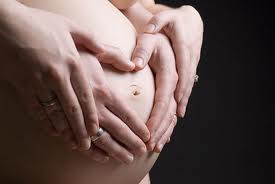

Tuesday, February 22, 2011
The pubis is divided into 3 parts: THE HORIZONTAL BRANCH OR BODY , a horizontal segment, located above the hole obturator;
DESCENDING BRANCH, a segment stretched backwards and situated below the quadrilateral plate. 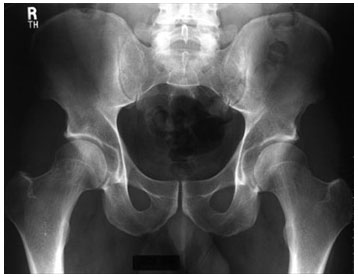 The top edge of the horizontal ramus of the pubis and the lower edge of the industry come together to form the downward angle of the pubis. The face angle of the pubis forms a sagittal articular surface slightly concave and very oblique axis in the lower back. This
The top edge of the horizontal ramus of the pubis and the lower edge of the industry come together to form the downward angle of the pubis. The face angle of the pubis forms a sagittal articular surface slightly concave and very oblique axis in the lower back. This
VIEWS OSTEOPATHIC
osteopathic The objective of balancing is to find success with the various causes that have given rise to this problem within the subject in question. We can divide the pubic in two broad categories:
the groin traumatic
reduction spinal mobility with compensation adjusted to the sacrum and pelvis; the repetitive microtrauma over time, especially at a young age, and intensely on hard surfaces; groin Athletics: definition and surgical treatment
LAMINA THE DISTRICT
, a plate placed in front of the obturator hole near to the midline, flattened from before backwards;
- articular surface and its counterpart of the pubis are divided with the opposite sides of the convex core interpubico.
- The joint is reinforced: forward
- : anterior ligament back: back from ligament
- above : ligament top
: ligament or less arcuate ligament sottopubico
VIEWS OSTEOPATHIC
osteopathic The objective of balancing is to find success with the various causes that have given rise to this problem within the subject in question. We can divide the pubic in two broad categories:
the groin traumatic
the chronic groin 

The groin appears after a traumatic injury of the pubic symphysis, but fortunately a direct blow to the symphysis is very rare. More likely, however, that it occurs for other reasons. A fall on the feet, for example, may mean that the forces of contact with the ground resulting asymmetric, thus causing a rise of more than the pubic branch and then moving to a "gap" of the pubis, the involvement of a non-physiological ligaments pubic. Or again, you may experience excessive tension of the adductor muscles, due to a move opposed by opposition lower limb. Such stress may cause deterioration of many ligaments and muscle insertions affecting the pubis dysfunction osteopaticaNella and create a chronic disease, however, we can find the pubis adapted to an altered functional pattern. The pubis is the crossroads and the point of insertion of powerful muscles (large rectus abdominis, obliques and transverse and all the adductors of the thigh) muscle that are organized in chains, is also the point of insertion, through a number of ligaments, different visceral structures (bladder, uterus, spermatic cord, prostate). For the particular anatomical shape and topography in the groin are to discharge the iperpressioni coming from both ascending and descending chains muscle during walking is in the upright position.
So the pubis, in this case, it is not in any way the cause of groin .
The most common causes that allow the establishment of
groin may be:
- reducing the mobility of the pelvis or a hemi-pelvis with reduced mobility in the opposite direction of the symphysis;
- conflict between the powerful adductor and abdominal weak, where each pull in one direction and the other in the opposite direction, until the onset of pain in the muscles and their tendons that, with possible radiation in the surrounding areas, including the scrotum;
reduction spinal mobility with compensation adjusted to the sacrum and pelvis; the repetitive microtrauma over time, especially at a young age, and intensely on hard surfaces;
the exaggeration of lumbar lordosis; the quadriceps contractures analgesic / muscle adductors; system dysfunction cranial - sacral especially in sports where you hit the ball with his head several times;
- scar adhesions in the pelvic region or regions that influence;
- dysfunction osteopathic visceral organs above the pubic bone.
- Through observation and palpation of specific tests, the osteopath can understand the cause or causes of the dysfunction of osteopathic groin. Osteopathic treatment, even for the most pubic issues, will contribute significantly to alleviate, solve the groin.
- It 'important to make differential diagnosis, including through instrumental and clinical investigations. After the treatment, the osteopath will try to prevent recurrences and to preserve the unpleasant state of health of the patient, through dialogue and information on the postural behavior. Find the cause not the symptom of the disease gives osteopath, including therapeutic disciplines, a truly holistic approach.
- by the students of 3rd year CDSOA
- Papers
- LA Ahumada, Ashruf S, Espinosa de los Monteros-A, Long JN, de la Torre JI, Garth WP, Vasconez LO
Athletic groin: definition and surgical treatment
Source: Ann Plast Surg. October 2005, 55 (4) :393-6
Taylor DC, Meyers WC, Moylan JA, Lohnes J, Bassett FH, Garrett WE Jr. Abdominal musculature abnormalities as a cause of groin pain in athletes. Inguinal hernias and groin
- Abnormal abdominal muscles as a cause of groin pain in athletes. inguinal hernia and groin Source: Am J Sports Med 1991 May-Jun; 19 (3) :239-42 Christopher M. Rancont, DO
- Chronic Psoas Syndrome Caused by the Inappropriate Use of a Heel Lift Chronic Psoas Syndrome caused by inappropriate increases Source: JAOA - Vol 107 - No. 9, September 2007 Source: ; Tuttosteopatia
Subscribe to:
Posts (Atom)